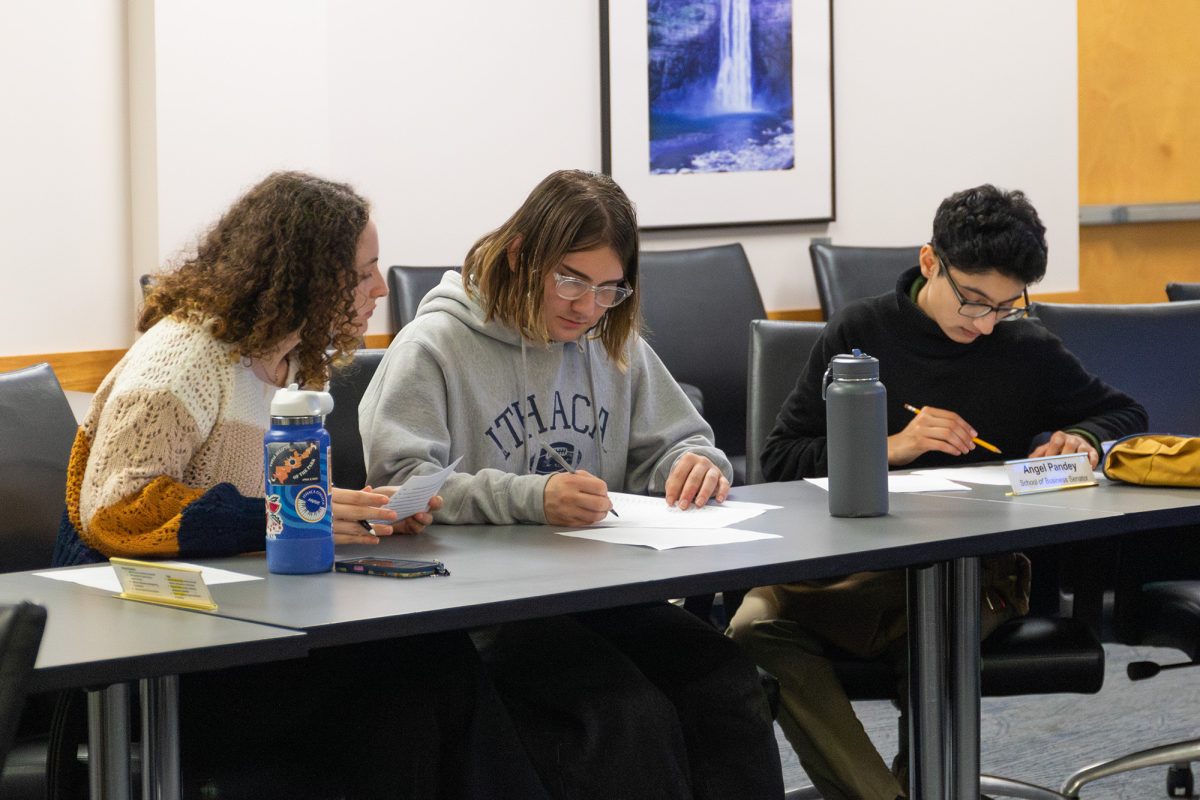Paul De Luca, lecturer in the Department of Biology, has recently received national attention for his research on different species of bees and their buzzing sounds. In collaboration with his colleagues Mario Vallejo-Marin and Luc Bussiere, both lecturers of biological and environmental sciences from the University of Stirling in Scotland, the group published its research in Naturwissenschaften, a monthly peer-reviewed science journal.
De Luca and his colleagues observed bees in their natural habitat as well as in a greenhouse facility with an experimental garden including a variety of flowers that naturally attracted bees. On March 1, The Economist published an article highlighting the specifics of De Luca’s research and his results after initially approaching him to help fact check a story on the behavior of arthropods, the biological phylum including bees. The publication then decided to highlight De Luca’s findings.
Design Editor Marianna Dunbrook spoke to De Luca about the process of his research and his findings, and how he intends to continue this research in the future, potentially by collaborating with Ithaca College students to investigate local bees and their behavior.
Marianna Dunbrook: What initially engaged your interest with arthropod behavior?
Paul De Luca: I took an entomology course as a junior [in college], and it changed my life. It was the most amazing thing ever, and I knew whatever career I did it would be involving insects … that led me down the path that brings me here today.
MD: Did anything specifically inspire you to begin research for your most recent publication?
PD: I worked in vibrational communication for years … I started reading up on it, and I thought it was really neat, and it’s also relevant because bumblebees worldwide are in rapid decline. Not just honey bees, but many species are under threat and actually disappearing … We hope that this work can help us understand the natural history of bumblebees and aid in their conservation. If bumblebees disappear, it might be more serious than honey bees because they provide about 30 percent of our food in terms of pollination services, and in a world without bumblebees, our food would be very bland.
MD: How did you come to collaborate with Mario Vallejo-Marin and Luc Bussiere of the University of Stirling?
PD: I did my masters at the University of Toronto Mississauga, and a friend of mine, [Luc Bussiere], who did his graduate work there at the same time is now a faculty member at Stirling. He and Mario were discussing a project … he knew of my background and told Mario he knew of a colleague who was perfect for this project. So the three of us collaborated on this work.
MD: What was the most difficult aspect of conducting your research?
PD: Recording the buzzes under natural conditions. We recorded the buzzes of bees as they were pollinating the flowers in the field. And bumblebees do not sit still for you, and they don’t listen and they get quite upset when you try to manipulate them. We basically followed the bees around with a microphone [in the field] … We recorded thousands and thousands of buzzes.
MD: How did The Economist approach you to write an article about your research? What was your reaction?
PD: We had the paper published in a journal called Naturwissenschaften. A reporter from The Economist saw [our research], thought it was interesting and asked if I would like to comment on a news report. They wrote a story about [our research] and initially had me doing some fact checking.
MD: If you are continuing your research, what are you planning on looking into?
PD: The big question we have right now with this is trying to find out if bees alter their buzzes for different kinds of flowers. Pollination occurs in about 20,000 different types of flowers, and they all have different shapes and sizes, so we’d like to know is there sort of a “one buzz fits all” or are bees sort of able to tailor their buzz to buzz like this on this flower and this on that flower? And so, if we can demonstrate that plasticity, that would be a really cool thing for an insect.







